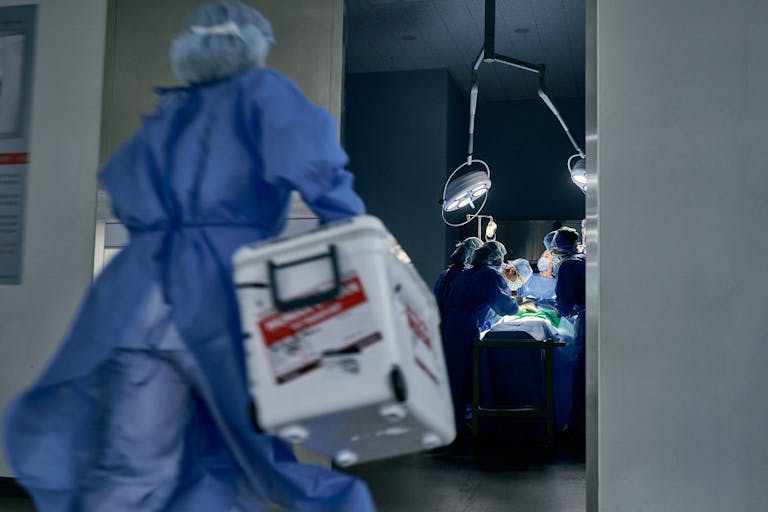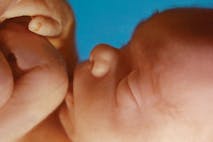
Australian woman donates organs after self-administering deadly suicide drugs
Cassy Cooke
·
Investigative·By Kristi Burton Brown
Why miscarriage, ectopic pregnancy, and early delivery are not abortions
Too often, inaccurate medical terms have led many women to believe they have undergone abortions when nothing could be further from the truth. Let’s clear up the facts and make sure women have the whole story.
Miscarriage is Not Abortion
The insensitive term “spontaneous abortion” is often used in medical settings instead of the term “miscarriage.” Many a woman has been devastated when, while recovering from a miscarriage in an emergency room or a doctor’s office, she is informed that her “spontaneous abortion” is complete.
A miscarriage — the completely unintentional death of a child in-utero — is not remotely related to an actual abortion. Actual abortion — whether conducted through means of the abortion pill or surgical procedures — is the on-purpose, consciously chosen, and fully intended violent taking of a child’s life. The distinction between miscarriage and abortion becomes clear when Dr. Anthony Levatino’s videos describing abortion procedures are viewed.
No woman suffering through a miscarriage should be made to feel that she has had an abortion.
A D&C Procedure (or Taking Pills After a Miscarriage) is Not an Abortion
Far too many women have been guilt-tripped into believing that undergoing a D&C procedure or taking a pill to clear their uterus after a miscarriage is no different than a woman who has consciously chosen an abortion.
However, a woman who has a D&C or takes a medication after an incomplete miscarriage has not chosen an abortion. An incomplete miscarriage arises when the child dies inside his mother’s womb, but has not yet been expelled by the mother’s body. This can cause health and infection risks to the mother, and doctors commonly recommend either a D&C procedure or the misoprostol pill to clear the woman’s uterus.
While a D&C is also used to commit an abortion, a D&C is not always an abortion. It completely depends on the purpose: is a D&C being committed while a child is still alive in her mother’s womb? If so, it’s an abortion. Is a D&C being used to clear the mother’s womb after her child is dead and her body is not naturally cooperating? If so, it is most certainly not an abortion. The animated video below shows a D&C suction aspiration abortion being used to kill a living human being — not one that has already died:

The same is true if a woman is prescribed misoprostol or other medication that causes her body to expel her dead child. This is not equivalent to taking the abortion pill (which includes misoprostol) while her child is still alive and with the express purpose of ending her child’s life.
It comes down to the purpose: Is a living child being intentionally killed? Or is the child already dead, and are the procedures and medications being performed and prescribed to preserve the mother’s health? One is an abortion. The other is not.
The Removal of an Ectopic Pregnancy is Not an Abortion
Nearly all ectopic pregnancies are deadly to the child and have a high statistical risk of being deadly to the mother if they are not removed. With rare exceptions, a preborn child cannot survive unless inside the mother’s uterus. There is hope that, one day, medicine will advance to the point where ectopic pregnancies can be safely transferred to the mother’s womb. A few doctors around the world are willing to manage certain kinds of ectopic pregnancies.
READ: ‘Ovary baby’ survives against odds
Until these medical advances become possible for all women, the removal of ectopic pregnancies is a matter of life and death. Sadly, a child will not survive the removal of an ectopic pregnancy because she is too young to survive outside the womb at this stage. However, the purpose of removing her from her mother’s womb is not to kill her, but instead, the purpose is to preserve life.

In ectopic pregnancies, two lives are at risk. In most cases, if the pregnancy is allowed to continue, the mother and the child will likely — or, in some cases, certainly — die. Generally, the removal of an ectopic pregnancy is not done with the intention of killing a child, but with the intention of saving the one life that can be saved: the mother’s. It is not an abortion. For a clear perspective on ethical treatment methods for ectopic pregnancy from the National Catholic Bioethics Center, click here.
As a statement by the Association of Pro-Life Physicians explained:
When the life of the mother is truly threatened by her pregnancy, if both lives cannot simultaneously be saved, then saving the life of the mother is the primary aim. If through our careful treatment of the mother’s illness the pre-born patient inadvertently dies or is injured, this is tragic and, if unintentional, is not unethical and is consistent with the pro-life ethics.
An Early Delivery to Save the Mother’s Life is Not an Abortion
Sometimes, a woman’s body is unable to gestate her child long enough for her child to survive. This is due to no failure of her own, but is simply a tragic reality. In these situations — often caused by an infection, illness, incompetent cervix, and numerous other reasons — her body goes into premature labor, and medical professionals are unable to stop the delivery. This is not an abortion, and no woman should be led to believe it is.
Additionally, specifically in scenarios where a woman is in the midst of a life-threatening illness, doctors may recommend an early delivery to save her life. If a woman undergoes an early delivery and her child cannot or does not survive, she has not chosen an abortion. She did not choose to have her child undergo a violent procedure that gave him no chance of survival and intentionally killed him. Instead, she chose a natural process that gave her child the best chance at life — delivery. If her child is born at the age where he has any chance of survival, medical teams should be in place and work to save his life. Whenever both lives can be preserved, that is always the best practice.
However, if the child does not survive, the mother did not intentionally end her child’s life, and she did not have an abortion.
READ: Is abortion ever necessary to save the life of the mother?
Conclusion
In the name of making abortion “normal,” pro-abortion individuals and groups who sell abortions to women try to convince women who have undergone tragic but necessary medical procedures that they chose an abortion. This is simply not true. A woman who has already been forced to suffer through a miscarriage, the loss of an ectopic pregnancy, or an early delivery should not be misled into thinking she’s had an abortion.
Live Action News is pro-life news and commentary from a pro-life perspective.
Contact editor@liveaction.org for questions, corrections, or if you are seeking permission to reprint any Live Action News content.
Guest Articles: To submit a guest article to Live Action News, email editor@liveaction.org with an attached Word document of 800-1000 words. Please also attach any photos relevant to your submission if applicable. If your submission is accepted for publication, you will be notified within three weeks. Guest articles are not compensated (see our Open License Agreement). Thank you for your interest in Live Action News!

Cassy Cooke
·
Investigative
Carole Novielli
·
Abortion Pill
Carole Novielli
·
Investigative
Carole Novielli
·
Investigative
Carole Novielli
·
Investigative
Nancy Flanders
·
Newsbreak
Kristi Burton Brown
·
Newsbreak
Kristi Burton Brown
·
Issues
Kristi Burton Brown
·
Newsbreak
Kristi Burton Brown
·
Newsbreak
Kristi Burton Brown
·